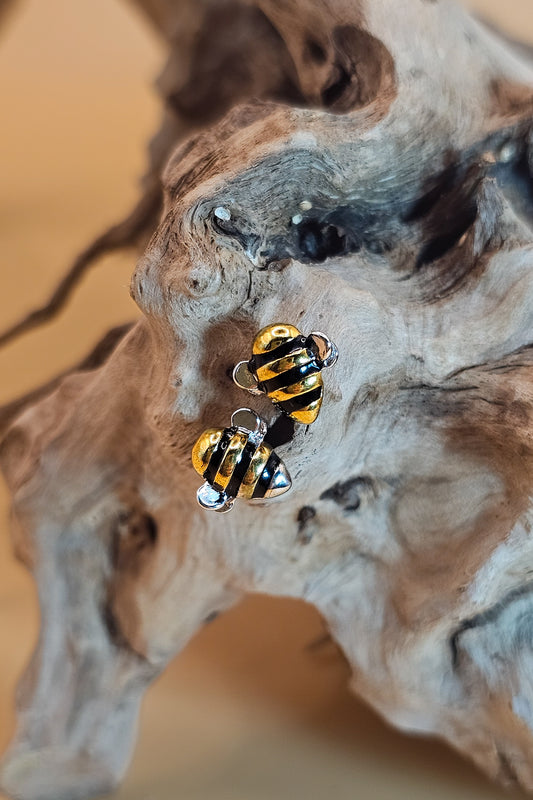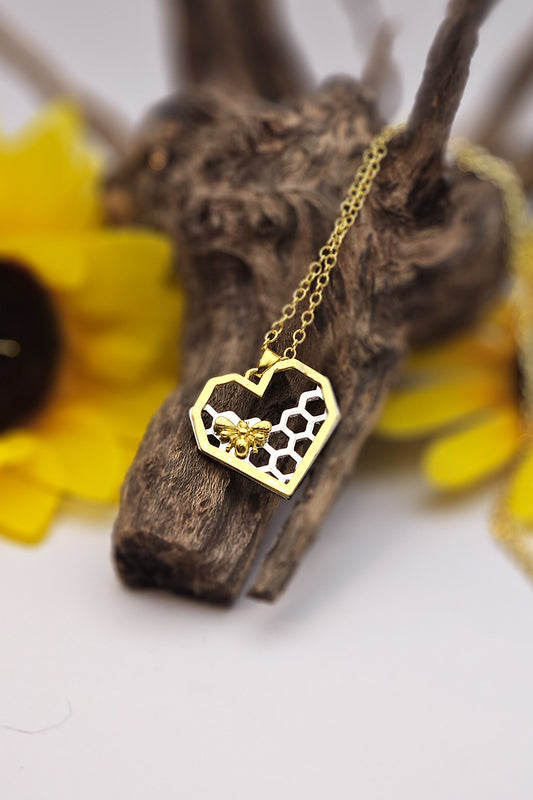This is a continuation of last Friday's blog post about bees eating honey to heal infections. You can read the first post here.
The hexagon is the most efficient shape known, so hexagonal cells in honeycomb ensure that no space is wasted. According to Christina Grozinger, an entomologist at Penn State University, beeswax is a flexible building material, so combined with the efficiency of the hexagonal shape and stacked tightly together, honeycomb is an engineering feat.
Honeybees stack the individual cells by molding the honey into them. Another advantage to the tight cell packing is that water evaporates more quickly from the comb, due to the larger surface area. This means microbes are less likely to grow, and this is a big plus for bee health because they live so close together in their hives.
The way bees gather nectar for the honey making process is another wondrous feat in itself, and an insight into the community-minded way bees operate. It is a precision-oriented process, and each bee knows her role in the undertaking.
It all begins with worker bees gathering nectar from an assortment of flowers. First, a worker bee gathers nectar from a flower with her tongue. Each bee has a honey tummy, designed solely for the storing of nectar, so that’s where the nectar goes. Rich enzymes like invertase mix in with the nectar. Invertase divides the sucrose molecules of the nectar in half, the remaining substance is the simpler sugars of glucose and fructose.
This 5:49-minute video by Mystery Doug looks at how bees make honey:
Fascinating research indicates that invertase is a dedicated microbe that dwells in the guts of bees that manufacture it, and that bees most likely cannot generate invertase themselves.
When the bee’s honey stomach is full, she buzzes home to the hive, and regurgitates her nectar to the first bees in the assembly line that are in charge of manufacturing honey. These bees are in charge of the food supply—honey—for the hive, because all the resident bees consume precious honey for their survival.
The next bees that receive the nectar add more enzymes to the nectar and decrease the water content, causing the sugary substances to break down further and ensuring microbes cannot grow. These bees are all natural born chemists.
Once these manufacturing bees pack the honey into a hexagonal cell, they fan their wings over it to ensure that even more water evaporates. Another enzyme, glucose oxidase, at this stage causes some of the glucose in the cell to turn into gluconic acid, which protects and preserves the substance.
Glucose oxidase lowers the pH which slightly increases the acidity of honey. It has the additional benefit of producing hydrogen peroxide, and this also prevents microbes from growing, but could become too toxic if too much is present.
Each cell is a perfectly balanced universe in itself. Once perfected, it is capped or sealed with more beeswax, awaiting when it is needed by nurse bees or for the entire hive on cold or wet winter days.
Berenbaum wondered what might be happening with the phytochemicals suspended in the nectar that the worker bees brought back to the hive. She knew nectar is full of phytochemicals that repel pests and help plants to grow.
In 1998, her research team discovered that different types of honey featured different levels of antioxidants. It depended on the flowers involved in the harvesting of nectar.
She also discovered that when honeybees were given sugar water mixed with two honey phytochemicals, p-coumaric acid and the antioxidant quercetin, they tolerated pesticides better than bees fed only with pure honey. The bees with the spiked water also lived longer than those with a ‘normal’ honey diet, as reported by her team in 2017.
The immunity of bees was boosted by additional phytochemicals in honey, like abscisic acid, and wound healing was improved and their tolerance to cold temperatures was strengthened as well according to research.
Tomorrow we will add the final segment of this story, so please stay tuned.








